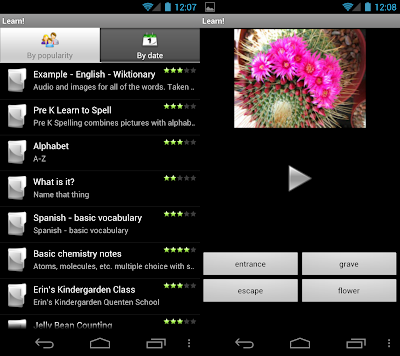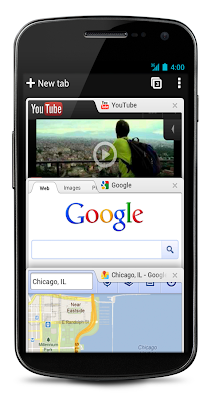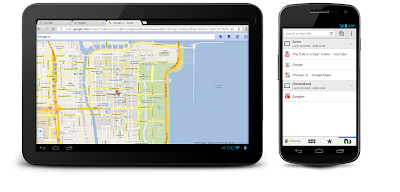Time to polish the champagne flutes and brush up on your movie trivia—it’s almost Oscar night again. Before you make any Oscar bets, get an edge by exploring
Google Insights for Search. Out of the major entertainment awards shows (Tonys, Emmys, Grammys) the Oscars are the
most popular in terms of search volume, and as we discovered
last year, patterns in search behavior can help us predict which stars will go home with shiny gold statues. So without further delay, let’s open the (search) envelopes and see who the Oscar (may) go to this year.
Best PictureLast year we found that for three years running, the films that won best picture had two things in common when it came to search data. First, the winning movies had all shown an upward trend in search volume for at least four consecutive weeks during the previous year. Second, within the U.S. the winning film had the highest percentage of its searches originating from the state of New York. Looking at search data for 2011, there were three films that satisfied these conditions—
The King’s Speech,
The Social Network and
Black Swan. Our prediction was on the mark:
The King’s Speech took home the Oscar in 2011.
This year, if we assume the two “winning conditions”—at least four consecutive weeks of increasing search volume plus highest regional interest from New York—will apply, then we can narrow down the nominees to a
field of four:
The Artist,
Extremely Loud & Incredibly Close,
Midnight in Paris and
War Horse. But how to go from four to one?
Let’s again look back at last year’s finalists. When you compare search query volumes for
The King’s Speech,
The Social Network and
Black Swan, the winning film,
The King’s Speech, had the
lowest search volume throughout the year leading up to the Oscars. It was the underdog that took home the statue.
We tried the same test on the Best Picture nominees from 2010. The nominated movies in 2010 that met the two conditions were
The Hurt Locker and
Inglourious Basterds. Once again, it was the the winning film,
The Hurt Locker, that had
lower search volume in 2009.
If the underdog trend holds this year,
Extremely Loud & Incredibly Close could be our surprise winner. If we go strictly by search popularity, however,
The Artist or
Midnight in Paris have the best chances—among our group of four, they’re currently blowing the competition out of the water.
If we’re having a popularity contest, it’s only fair to look at all nine nominees for best picture. A
2-
step comparison shows that the
most popular films by search volume are
The Help and Martin Scorsese's
Hugo.
Best Actor Of this year’s five nominees for Best Actor, Brad Pitt (
Moneyball) is clearly the most popular—searches for Brad in the last 12 months
far outpace any of the other leading men, as was the case in 2009 when he was nominated for
The Curious Case of Benjamin Button. However, it could be Brad’s famous good looks that have us searching, which brings about a good point: the most searched-for nominee doesn’t guarantee a win. James Franco had the highest search volume in 2011 but Colin Firth won, and in 2010, George Clooney was the most-searched nominee but Jeff Bridges took home the Oscar.
The pattern emerging over the past few years is that the winner is generally in the middle of the pack in terms of searches and has relatively steady search volume throughout the year. First-time nominee Gary Oldman (
Tinker Tailor Soldier Spy) fits that bill this year, but so does George Clooney (
The Descendants). Maybe it will finally be George’s year to win Best Actor.
Best ActressFor the past three years, the eventual Best Actress winner has seen a spike of interest in the preceding December. Additionally, two of the three most recent winners have had the strongest regional interest within the U.S. from the cities of Los Angeles and New York City (2010 winner
Sandra Bullock is the exception).
Among
this year’s nominees, Rooney Mara is the clear breakout star, with a huge surge in search volume this past December for the young lead in
The Girl with the Dragon Tattoo. However, it’s Meryl Streep who has the highest regional interest in
NYC and while Rooney is popular in LA, she’s even more popular in
San Francisco. So it could be her name that is announced when the envelope is opened—or not.
Of course, we don’t have a Magic 8-Ball or access to the names in those top-secret envelopes, so our predictions are just that—but it’s always enjoyable to look at how what people are interested in online plays out in the real world. As you prepare for your Oscar viewing parties this year, put a visit to
Insights for Search on your checklist before the red carpet walk begins (fun fact: searches for [red carpet]
peak at Oscar time every year). Between dry cleaning your tuxedo and making hors d'oeuvres, tune in to a pre-Oscar hangout on the
+Good Morning America page, where the live discussion will be the fashion dos and don'ts of the big night. You can also stay up to date on all Oscar news on
+Oscars, the official Google+ Page of the Academy Awards.
Posted by Rebecca Mall, Entertainment Account Executive, LA office



















